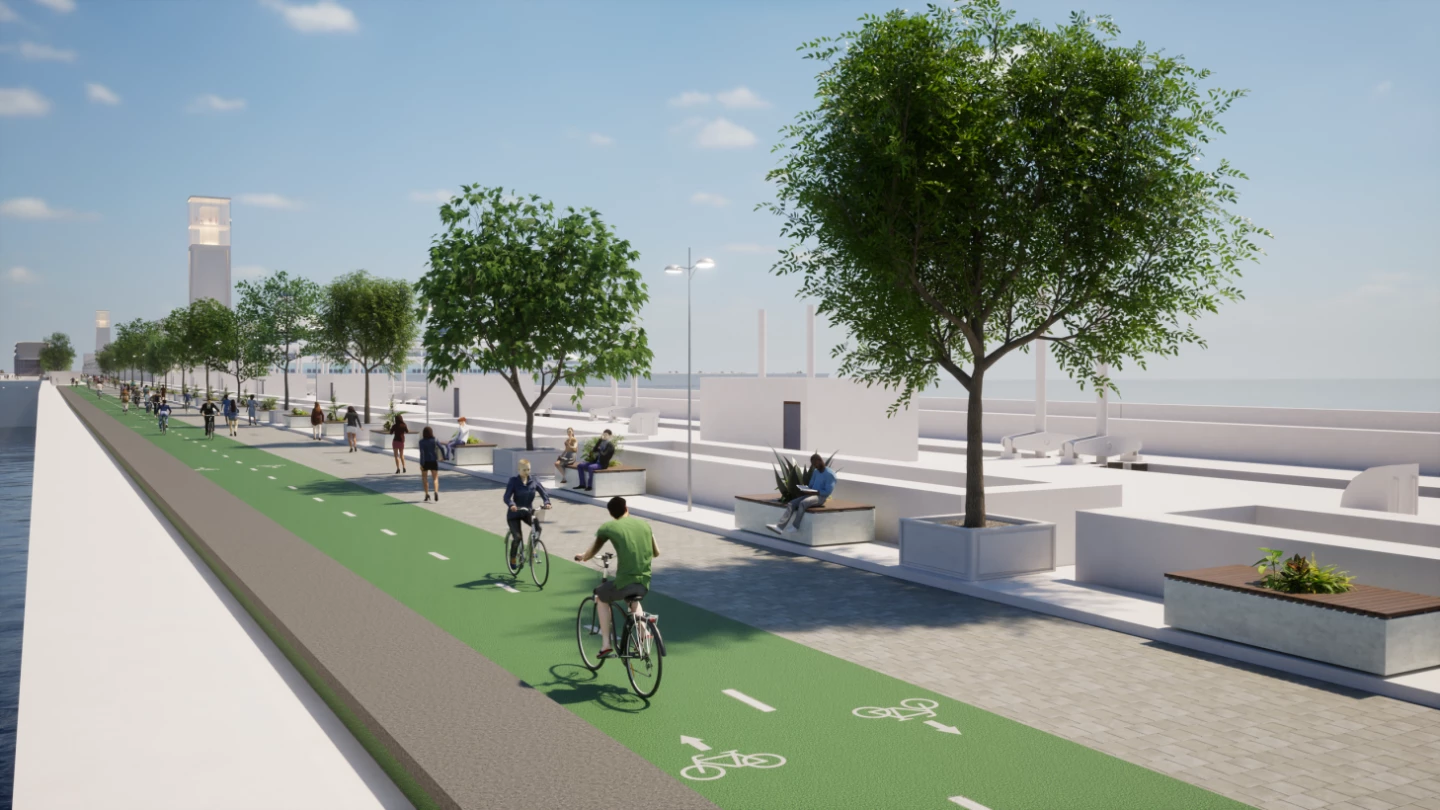A plan to build a barrier across the Mersey is starting to take shape. If it goes ahead, the ambitious project would becomes the largest tidal range facility in the world, while also offering pedestrians and cyclists safe passage across the river.
Plans appear to have been floating around for a while now. Authorities in Liverpool note that first mentions date back as far as 1924, followed by reports and viability studies in the 1980s. Politician John McDonnell recently recalled that he attended his first meeting on a Mersey barrage proposal back in 2015, but things seem to be moving forward at last.
"For as long as I can remember, there has been talk of building a tidal barrage on the Mersey," said Liverpool City Region's mayor, Steve Rotheram, in 2022 as he inked a collaboration deal with South Korean state water company K-Water. "Thanks to devolution – we’re working to make it a reality. There are still huge technical and financial challenges to overcome but Mersey Tidal Power has the potential to provide enough clean, green, predictable energy to power up to one million homes for over a century."
K-Water has been operating the Sihwa Lake Tidal Power Station since 2011, which was installed on a 12.5-km-long (7.76-mile) sea wall originally constructed to mitigate flooding and for irrigation of surrounding farmland. The facility features 10 submerged turbines rated at 25.4 MW each that generate power twice a day at high tide (outflow is sluiced away through gates). This one-way system has an annual production capacity of 552.7 GWh of electricity.
The Liverpool City Region Authority has been working on the technical aspects of several Mersey proposals for around three years (including a man-made lagoon), and Rotheram has now confirmed that the region has selected a bridge/barrage option between Liverpool and the Wirral to go through to the formal planning stage.

Interestingly, a barrage proposal across the Mersey between Dingle on the Liverpool side and New Ferry on the Wirral bank was abandoned in 2011 due to medium-term profitability concerns. Rotheram brought the scheme back to life as part of his Mayoral election campaign in 2017, and development cash was injected into the project in early 2020.
In addition to being the first pedestrian and cycling route to join the two regions over the river, the structure will also house 28 turbines driven by the flow of water in and out of the Mersey – generating electricity "using the energy available from the difference in height of the tides, which can be up to 10 meters (33 ft) in Liverpool." Total capacity is expected to be 700 MW, which would make this the largest tidal range scheme in the world.
The design will include sluice gates to allow water through when needed, which could help mitigate increased risks of flooding caused by climate change, as well as marine navigation locks to help keep the busy river traffic flowing.
The actual location of the barrage has yet to be determined, with the Liverpool Echo stating that previous options might no longer be viable and that the Authority is currently looking into locations "closer to the mouth of the river that may align to regeneration aspects around Liverpool Waters and Wirral Waters."
Assuming it gets the official nod later this week, the multi-billion-pound project will be sent to the UK's Planning Inspectorate later in the year for feedback on the kind of surveys needed to complete documentation relating to its environmental impact.

The red tape could take years to cut through, but it's hoped that the project – which will require government cash – could be realized by 2040. The operational lifetime of the facility is expected to match that of hydropower installations, and exceed 120 years.
"I think the brilliant thing about tidal range is that we’re trying to build something that will operate for more than 100 years," said Martin Land, Director of the Mersey Tidal Power project. "So it’s not just about net zero for 2050, it’s about net zero for 2150 and, of course, our Liverpool City Region ambition is to be there by 2040."
Estimates for localized cost of energy for the proposed Mersey Tidal Power project have not been forthcoming, but a technology brief from the International Renewable Energy Agency on 2014 reported that K-Water's Sihwa plant cost $117 per kWh to construct while producing electricity at $0.02 per kWh. The older but smaller La Rance facility in France cost $340 per kWh and produces electricity at $0.04 to $0.12 per kWh. The same brief estimated that the Mersey barrage would cost $820 per kWh – though that's not based on current construction budget figures.
Source: Liverpool City Region Authority






